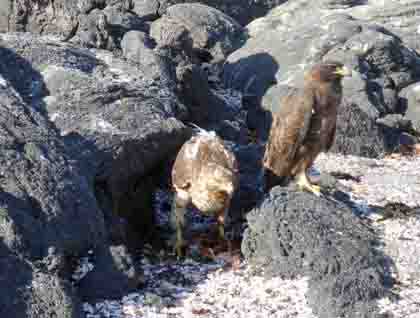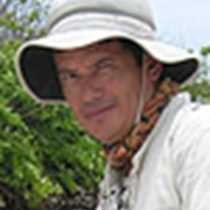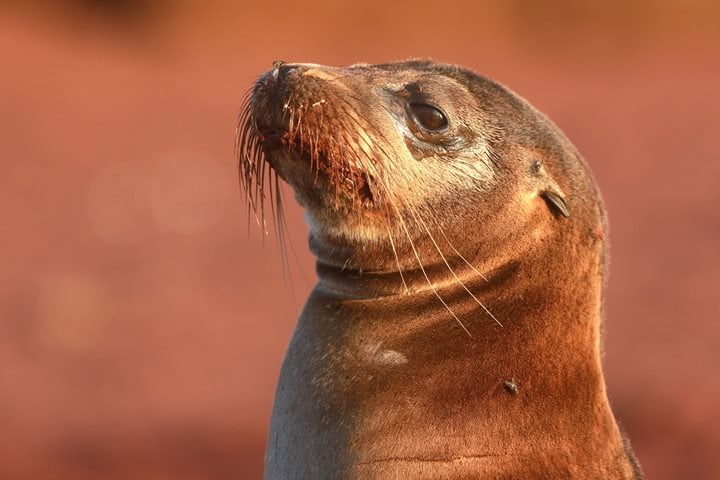After a long navigation crossing the equator from the north, we finally arrived to the west of Galapagos. It was early in the morning when some of our guests decided to get up to observe the gigantic flanks of Ecuador volcano, its colorful black and red rocks contrasted with the blue sky. The first beams of sun colored the ocean gold while in the distance we observed some oceanic sun fish and mobula rays jumping and splashing, disturbing the the calm waters.
After breakfast the National Geographic Islander dropped anchor just below the dramatic cliffs at Punta Vicente Roca. There was a soft breeze, perfect for boarding the Zodiacs to cruise along the shore and discover the geology of the islands. Cliffs, like mute witnesses, showed us the evidence of the last eruptions. We observed vertical black lines of lava or “dikes”, huge collapsed rocks, dozens of sea turtles and huge marine iguanas swam indifferently around the Zodiacs. Probably the creatures that captivated us the most were a flock of Galapagos penguins crowded together on a rock drying their wings and observing us attentively. We observed more penguins in the water and nearby flightless cormorants called our attention with their impressive courtship rituals.
Back on board our guests prepared their wetsuits and snorkeling gear and returned to the bay to explore the underwater world. It was incredible to observe dozens of sea turtles swimming or resting like rocks on the sandy bottom, waiting patiently to be cleaned by small fish. A flock of penguins passed me like torpedoes chasing tiny salemas. Deeper an inquisitive cormorant tried to catch some food checking one by one the crevices and holes among the rocks. What an exciting and great morning like nowhere else!
In the afternoon and after navigating south, we reached Punta Espinoza, Fernandina Island which is located at the western most point and considered the youngest island in the archipelago. We disembarked on the small dock and immediately treaded our way carefully among dozens of marine iguanas and lava lizards. We crossed by the only white beach of this side of the island where a great number of marine iguanas worked tirelessly making their nests. We crossed to the end where the rocky terrain began to receive us with a special surprise, three Galapagos hawks! There were two adults (the parents) teaching their offspring how to kill and eat marine iguanas.
We saw cormorants mating and making their nests with seaweed and small trunks. On the other side of the sandy area, baby sea lions rested peacefully while just at the end of the trail the family of hawks took off, indicating this day was over. We returned to the ship tired but very happy because this day was magical and will remain in our memories forever.







